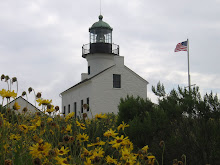Elephant seals at Piedras Blancas
As you approach the beach at Piedras Blancas, the landscape appears to be littered with hundreds of boulders on the sand. Not until you get closer do you realize that the shapes are actual living sea creatures, now moving, squawking and bellowing. What you’ve encountered is the elephant seal colony at Piedras Blancas, a site on the Central Coast well worth a peek.
The elephant seals were first spotted on this small inlet in 1990 and numbered just a couple dozen. Today, more than 15,000 seals migrate to the Piedras Blancas rookery each year. That’s quite impressive considering these mammals were hunted to near extinction in the northern hemisphere by the late 1880s. Their oil-rich blubber was a hot commodity. The seals are now legally protected from hunting and harassment and continue to thrive in breeding grounds up and down the California coast.
An elephant seal posing for the camera
The time of year you visit Piedras Blancas will determine whether you witness the elephant seals breeding, birthing, molting or resting. Breeding season begins in late November marked by the arrival of the huge adult males with their protruding, trunk like noses (hence the name elephant seal). Battle often erupts as the bulls stake out their territory and establish dominance within the colony. Pregnant females begin to arrive in December and the first pups are born around December 20. Births continue through January - typically one pup is born to each female. Each pup spends about four weeks nursing, gaining as much as 10 pounds a day. Once the baby has been weaned, the mother mates and returns back to sea, allowing the males to take over guard duty of the youngsters. It will be another 2 ½ months before the pups have the swimming skills to tackle the ocean alone. The next significant time at Piedras Blancas is April through July when the seals return to the shore to molt. The shedding of dead skin and old fur make the seals look quite pitiful, but it's a necessary function in the cycle of this mammal’s life. During this time, the seals also get a much needed rest from their journeys across the open waters.
Female protecting her pup (Photo: Friends of the Elephant Seal)
The Piedras Blancas elephant seal rookery is located 4.4 miles north of Hearst Castle on Highway 1. A designated parking area is clearly marked and leads to a boardwalk along the bluffs for viewing. Winds can be brisk and cold along the shoreline, so dress accordingly. There is no admission fee to view the seals and docents are usually on hand to answer questions.
More information on the Piedras Blancas rookery can be obtained from the non-profit organization, Friends of the Elephant Seal, which also runs a small visitor center and gift shop at 250 San Simeon Avenue in San Simeon. Contact them at 805-924-1628.



























0 comments:
Post a Comment